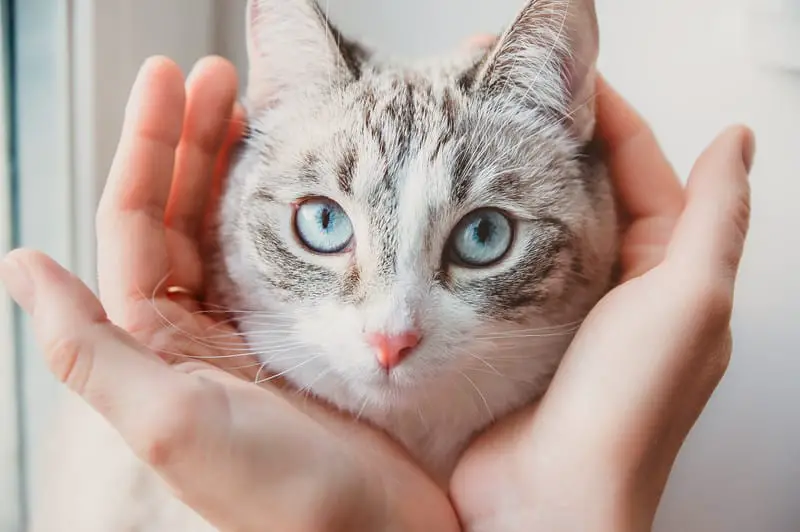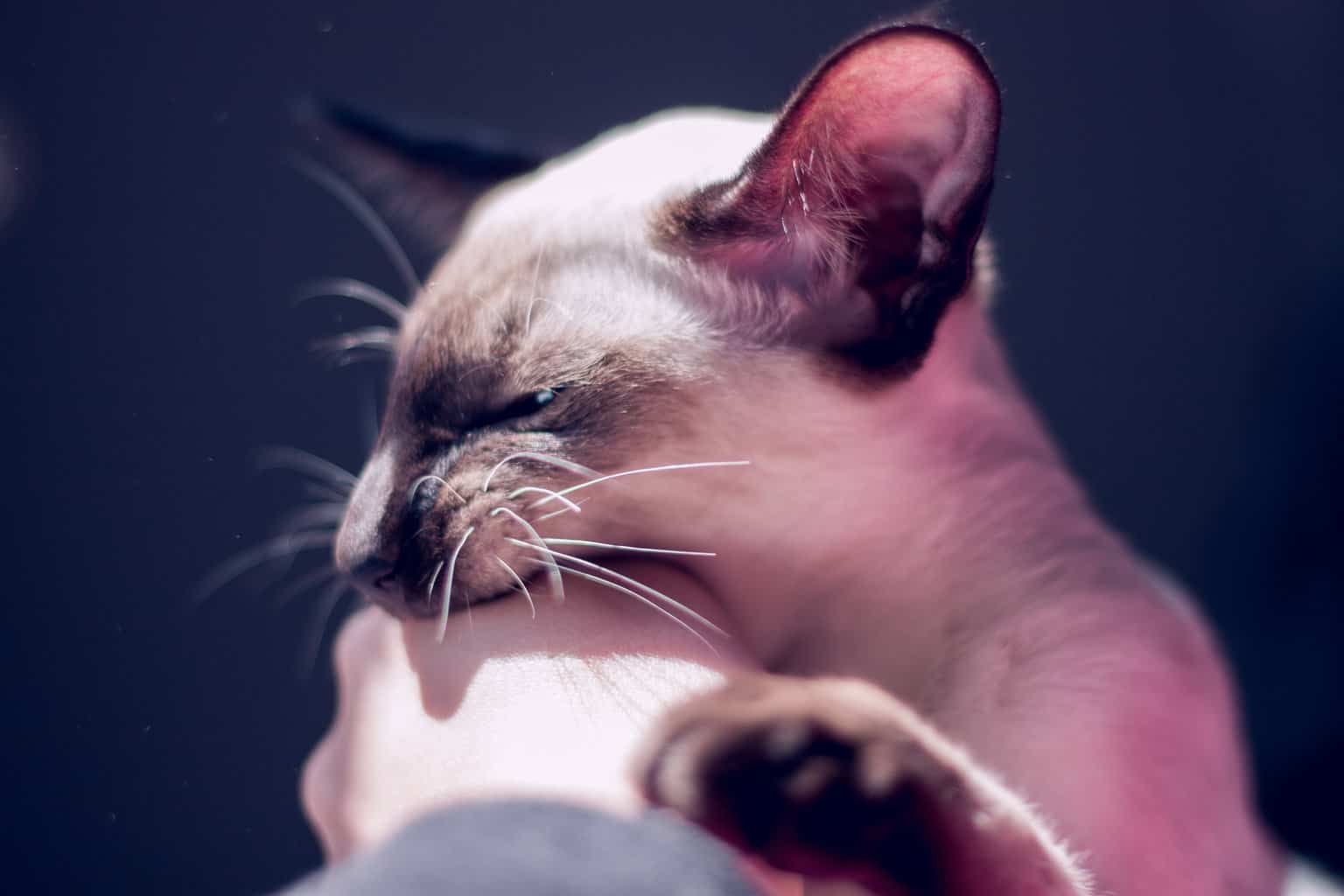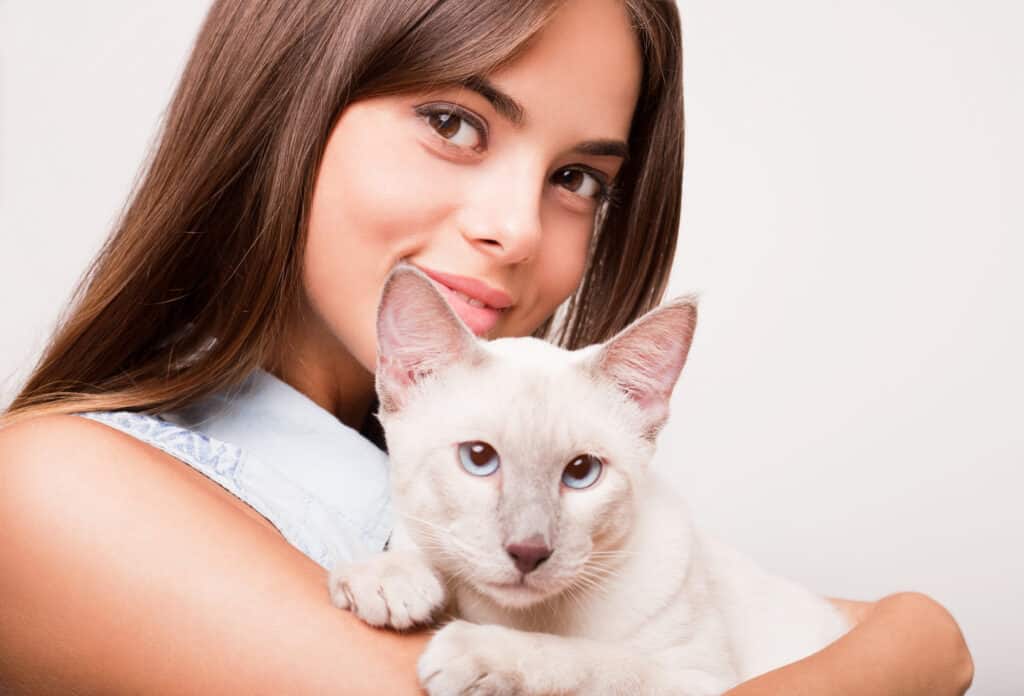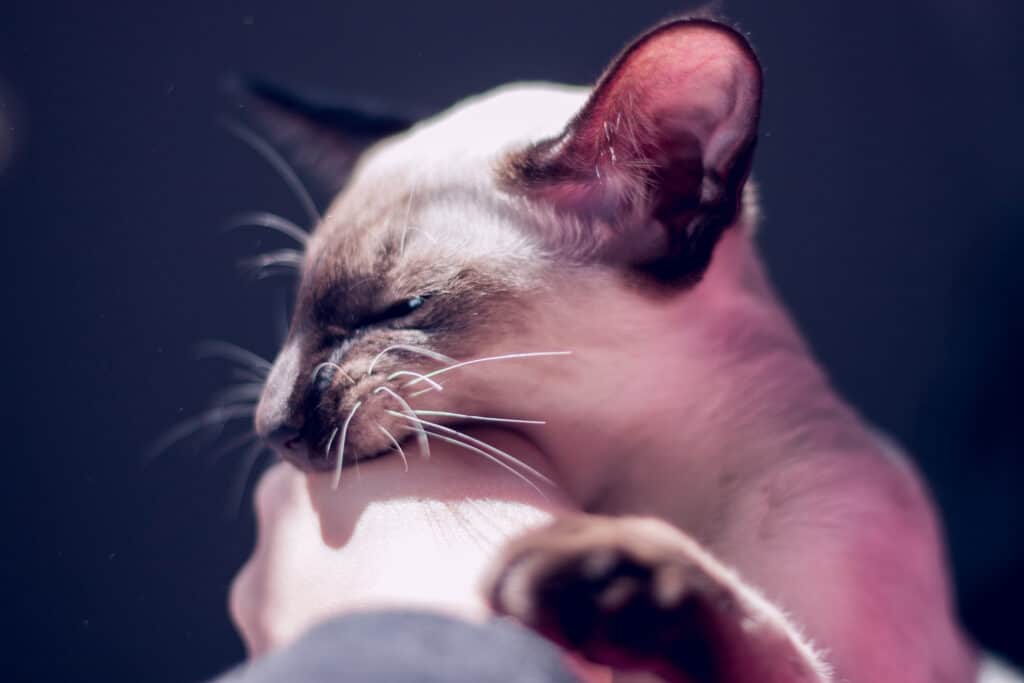Few felines are more elegant or luxurious than a Siamese cat. This widely-adored creature is a gem to behold, so it’s no surprise that its price tag is often a bit steep too.
But what exactly makes Siamese cats so expensive?
Here are six reasons why Siamese cats are so expensive:
- High demand
- Pedigree
- Source
- Coloring
- Age
- Show quality
Most people spend hundreds of dollars to get a purebred Siamese cat. However, depending on some of the factors I’ll dive into in a moment, this feline can set you back a couple of thousand more.
Keep reading to discover why this can be.
1. High Demand
Because of their distinctive beauty and prominent figure, Siamese cats are among the most famous felines.
They are on Purina’s most popular cat breeds list, along with Maine coons, Oriental cats, Persians, Ragdolls, and Abyssinians.
According to Animal Path, Siamese kittens can cost anywhere from $250 to $1000. Adult show cats, which are highly sought-after, are even more expensive, exceeding $2000 at times.
Siamese cats are in high demand, which drives prices up.
Supply and demand always factor in when it comes to purchasable goods, and pets are no exception.
There’s a high demand for show-quality, rare, purebred Siamese cats. However, only a few credible breeders could supply these animals to potential buyers.
As a result, these Siameses are far more expensive than your typical house cat.
However, it may be worth noting that despite their high demand and extravagant price, Siamese cats are not among the most expensive breeds.
There are rarer felines whose price tags far exceed that of a Siamese. The Siamese are becoming more common as more people are interested in buying them. Thus, rarity plays a factor in price.
2. Pedigree
Another price driver is pedigree. Expectedly, purebred cats are more expensive than mixed breeds.
Breeders need to ensure that the parental lineages are indeed Siamese only to keep a pure bloodline. To do that, they need to maintain records, not just of the present cat but of its ancestral lines too.
Purebred cats also have specific needs that breeders have to cater to. For instance, they may require special diets or special medical care.
3. Source
The place where you plan to buy your cat also affects the price.
There can be significant price differences when you get your pet through a rescue center, adopt it, or purchase it from a breeder.
The exact location of your source will affect the price tag; let’s dive into this a bit more.
Location
Location matters if you opt to get your Siamese friend from another state or country (for instance, Thailand). Traveling to that place and bringing back the cat with you would be more expensive.
However, if your source is located nearby, it won’t be much of a factor.
Adoptions or Rescues
Although it’s challenging to find a Siamese in rescue centers, there’s still a possibility of them ending up there. Especially now that they are getting more common, there may be a sad case or two of a Siamese being placed in rescue.
Adopting a rescued Siamese is much cheaper than getting one from a breeder. However, there can be downsides.
For instance, these cats may have health issues that need treatment. This can get expensive.
In the end, the expenses of adopting or rescuing a Siamese cat may be the same as getting one from a breeder. However, this cost comparison would depend a lot on the circumstances.
Still, many recommend adopting to help give a home to abandoned kitties, Siamese or not.
Breeders
A breeder is the most expensive source for Siamese cats, but it may be worthwhile if they’re credible.
Good breeders ensure that your cat’s background (e.g., health problems, vaccination dates, pedigree) is well-documented. They would also ensure that the feline is in good health.
Beware of breeders who do not care about the cat’s welfare and are only in the business solely to make a profit.
They may sell their Siamese cheaper than reputable breeders, but you won’t be assured of a purebred and healthy cat.
You must research extensively to get your Siamese friend from a credible and quality breeder. Feedback and reviews can be valuable sources of information. Also, it’s a good idea always to check if the necessary documents are up-to-date and truthful.
If you want an idea of where to start, you may try consulting the Cat Fanciers’ Association’s Find A Breeder tool. The organization is one of the most credible cat-related groups concerned with feline wellbeing.
The Find A Breeder tool offers categories based on breeding, making the search easier and more convenient.
The downside is it may be inconsistent. Sometimes there will be plenty of listings; other times, there might not be any.
Avoid buying cats on Craigslist – at all cost
You may or may not be surprised to learn that animals are being sold on Craigslist. They may be cheaper than those from breeders, but it is essential not to tolerate this kind of business.
Not only are you not assured that you’re getting a healthy and well-cared-for animal, but you may also indirectly encourage people to keep breeding cats with little regard for their health and wellbeing.
Also, the likelihood of getting scammed out of your money is significant.
4. Coloring
Siamese cats have unique, recognizable appearances because of their coloring.
Often portrayed with light-colored bodies and dark-colored extremities or points (face, feet, tail, and ears), this trend may be noticed in most felines of this species, but there are variations.
The iconic Siamese coloring is temperature-dependent. Cats living in cooler areas appear to have darker colors or shades.
Since the extremities tend to be cooler than other parts of the body, they appear darker. The color or shade of the darker regions depends on the cat’s genes, thus leading to seal points, chocolate points, etc.
Coloring variations impact the price a Siamese cat would fetch. This is because cat show organizations can use coloring to determine whether the Siamese is purebred or not.
Those that display purebred colorings are bound to be more costly.

Purebred Coloring
According to the Cat Fanciers’ Association (CFA), these are the only coloring types that indicate purebred pedigree:
- Seal Point. Body color is pale fawn to cream with lighter shading on the stomach and chest. Points, nose, and paw pads are of a deep seal brown color. Their eyes are a deep vivid blue.
- Chocolate Point. The body color is ivory. The Points are of warm milk-chocolate color. Nose and paw pads are of cinnamon color. Their eyes are a deep vivid blue.
- Blue Point. Body color is a cold bluish-white gradient that turns to white on the stomach and chest area. The points are deep blue, and the nose and paw pads are slate-colored. Their eyes are a deep vivid blue.
- Lilac Point. The body color is glacial white, and the points are of a pinkish frosty gray color. The nose and paw pads are lavender-pink colored, and their eyes are a vivid blue.
To read more about Siamese cat coloring, have a look at our article: All About Siamese Cat Colors (with Pictures)
The CFA (Cat Fanciers Association) is the official organization in charge of major cat shows. They are also dedicated to preserving pure Siamese lineage. Thus, they have many restrictions regarding coloring and other qualifications.

Mixed Coloring
Meanwhile, these are the types of colorings said to indicate mixed-breed heritage:
- Tortie points. As the name implies, tortie points have a coloring that follows a tortoiseshell pattern.
- Red points. These are also known as flame points or orange points. The color of the points is chestnut or pale pink. Although not recognized by the CFA, it may be accepted by other cat organizations.
- Lynx points. These are also called tabby points or shadow points. Tabby or lynx points have a distinctive M mark on their forehead, just like other tabby cats, although that may not be visible if their points are too dark. The purebred coloring types have tabby point counterparts.
- Cinnamon points. The points are warm brown, with a lightly-shaded face. Their nose and paw pads may be light brown or pink. They appear to be a lighter version of chocolate points.
- Caramel points. Points are of warm gray to brown color. Intensity or darkness varies.
- Cream points. There is little difference between the colors of the points and the body.
- Fawn points. They look like seal points but with creamy, soft gray points and less intense blue eyes.
- Apricot points. They look like cream points, but their points are more orange.
Some of the Siamese point types I’ve mentioned, such as red or flame points, are part of the list of rarest Siamese cats by Rarest.org.
Thus, even though these colorings may not be recognized as purebred, that doesn’t mean they should be valued any less. Despite their mixed-breed heritage, these cats are still beautiful and unique.
5. Age
Like with other animals and breeds, there are price differences that come with age differences. Typically, young ones, i.e., Siamese kittens, sell at higher prices than adults.
However, there are some exceptions to this trend. Adult show cats fetch a grander price, around $2,000 or more. This is because of their show quality, prestige, and demand.
6. Show Quality
As I’ve mentioned, adult show-quality Siamese cats are more expensive than the standard Siamese. But why so?
Many restrictions and standards must be met for a Siamese cat to qualify for a show. One of the most rigorous show-organizing bodies is the CFA.
According to the CFA Siamese Breed Council, a Siamese cat must be an 8-generation pedigree of registered Siamese to be registered into the CFA. That is, the cat’s previous ancestors must be purebred Siamese that can only be seal, chocolate, blue, or lilac points.
Ensuring eight generations of purebred Siamese requires sourcing your cat from a thorough breeder who is meticulous and truthful when it comes to keeping documents. In short, you need a quality breeder. However, quality comes with a price.
Aside from that, color is not the only factor that matters during show assessments. A cat’s overall and specific appearances, e.g., their structure, face shape, body size, and even width between eyes, are considered.
Based on the CFA Siamese Breed Standard, score points are given based on the appearance of the head, eyes, body, coat, and color. The body and the color bear the highest points (maximum of 30 points each); however, they are also divided into subcategories.
For instance, the 30 total points for color are divided into body color, point color, and eye color. Each subcategory is worth 10 points.
For the best chances at winning, people usually buy experienced adults to secure a show cat or get a kitten from a show cat pedigree.
Love reading about Siamese cats?
Have a look at our other great content about this magnificent breed
Our most popular article:
Introduction to Siamese Cats
Everything you need to know.
Or have a look at these popular reads from our website…
-

Why Do Siamese Cats Always Have Blue Eyes?
If you’ve ever looked up from work to see your cat staring at you, then the first thing you probably […]
-

Why Does Your Siamese Cat Bite So Much?
Siamese cats are a popular breed for their distinct beauty and character, so you might be surprised to find out […]
-

Wedgehead Siamese Cats Versus Traditional Siamese Cats
Siamese cat breeds are consistently ranked in the top 2 or 3 of the most sought-after cats in the world […]
Sources
- The Cat Fanciers’ Association: Find A Breeder
- FAQ Cats: How Much Is A Siamese Cat Worth – Pricing Guide And Cost
- PetsKB: How Much Do Siamese Cats Cost? (2022 update)
- CatsPurfection: SIAMESE CAT PRICE: HOW MUCH DO SIAMESE CATS COST?
- Hepper: How Much Does a Siamese Cat Cost? (Price Guide 2022)
- The Cat Fanciers’ Association: Siamese Breed Standard
- CFA Siamese Breed Council: About the Siamese Breed
- Purina: Most Popular Cat Breeds
- Rarest: 8 Types of Rarest Siamese Cats
- Hepper: 33 Siamese Cat Colors (with Color Chart)
- University of Alaska Fairbanks: We are Siamese if you Please
- Animal Path: How Much Do Siamese Cats Cost




